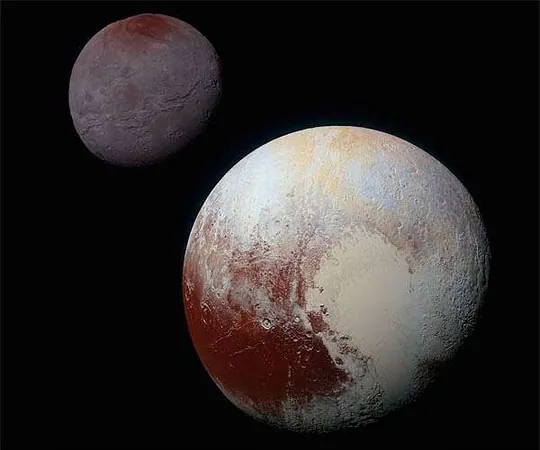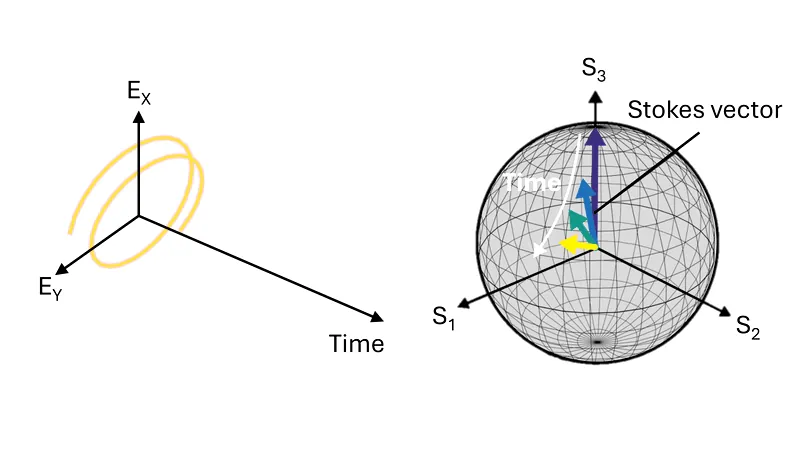
New SwRI Research Reveals Pluto and Charon's Formation Similarities to Earth-Moon System!
2025-01-10
Author: Nur
Introduction
In a groundbreaking study, a postdoctoral researcher at the Southwest Research Institute (SwRI) has unleashed new simulations proposing that Pluto and its largest moon, Charon, formed in a way that closely resembles the dynamics of the Earth-Moon system. This revelation not only highlights the unique characteristics of Charon—an unusually large moon relative to its planet—but also opens up exciting possibilities regarding Pluto's active geology and the likelihood of a subsurface ocean existing beneath its icy exterior.
Research Background
Dr. Adeene Denton, the lead researcher of the study recently published in Nature Geoscience, remarked, “We believe the Earth-Moon system originated when a Mars-sized object collided with the Earth, eventually leading to the Moon’s formation.” This insight is especially intriguing when compared to Mars, which possesses two diminutive moons that resemble small potatoes, while the moons of larger gas giants seem to only account for a minor part of their overall systems.
Advancements in Impact Modeling
Early models by Dr. Robin Canup in 2005 proposed that the Pluto-Charon system could stem from a colossal collision; however, they treated the involved materials as a fluid without strength properties. Recent advances in impact modeling now allow researchers to incorporate the effects of material strengths, leading to richer and more nuanced simulations. The new findings suggest that Pluto behaves as a rocky core surrounded by ice, changing the projected outcomes significantly.
Kiss-and-Capture Scenario
Dr. Denton explained, “Earlier models showed a shearing effect resembling the way blobs move in a lava lamp during a collision. The latest adjustments enable us to factor in structural properties, which means the impact momentum spreads out more evenly. This leads to what we call a 'kiss-and-capture' scenario, where the two bodies collide, temporarily form a structure, and then separate.”
Collision Dynamics
In this model, Pluto and Charon engage in an initial collision that results in a “snowman-like” formation before Charon settles into a stable orbit around Pluto. “Unlike most cosmic impacts, which are either hit-and-run or graze-and-merge events, this case is unique because the two bodies come together and stick without fully merging due to their distinct rock and ice compositions,” Denton elaborated.
Material Exchange and Structural Integrity
Interestingly, this collision would involve an interchange of materials between Pluto and Charon, with Pluto retaining a greater fraction of rock while Charon consists of about 50% rock and 50% ice. Remarkably, both bodies have managed to maintain their structural integrity, possibly preserving ancient interior features that date back to the time of the Kuiper Belt's formation.
Implications for Moon Formation
This collision theory may also shed light on the origins of Pluto's four small irregular moons, suggesting a broader context for understanding moon formation in our solar system. However, while this study elucidates the dynamics of the significant impact event, determining the precise timing of this occurrence is still a mystery. This timing is crucial to understanding Pluto's ongoing geological activity and the chances of liquid water being present beneath its frozen crust.
Conclusion
Dr. Denton concluded, “Even if Pluto begins as a very cold body, the immense impact coupled with subsequent tidal forces could eventually foster an ocean beneath its surface. This discovery could have significant implications for the entire Kuiper Belt, as eight out of the ten largest objects there share similarities with Pluto and Charon.” As researchers continue to unlock the secrets of our solar system, the study of these distant bodies promises to offer deeper insights into planetary formation and geological evolution.
Future of Research
Stay tuned for more updates on this exciting research as scientists unravel the mysteries surrounding Pluto and Charon!



 Brasil (PT)
Brasil (PT)
 Canada (EN)
Canada (EN)
 Chile (ES)
Chile (ES)
 Česko (CS)
Česko (CS)
 대한민국 (KO)
대한민국 (KO)
 España (ES)
España (ES)
 France (FR)
France (FR)
 Hong Kong (EN)
Hong Kong (EN)
 Italia (IT)
Italia (IT)
 日本 (JA)
日本 (JA)
 Magyarország (HU)
Magyarország (HU)
 Norge (NO)
Norge (NO)
 Polska (PL)
Polska (PL)
 Schweiz (DE)
Schweiz (DE)
 Singapore (EN)
Singapore (EN)
 Sverige (SV)
Sverige (SV)
 Suomi (FI)
Suomi (FI)
 Türkiye (TR)
Türkiye (TR)
 الإمارات العربية المتحدة (AR)
الإمارات العربية المتحدة (AR)